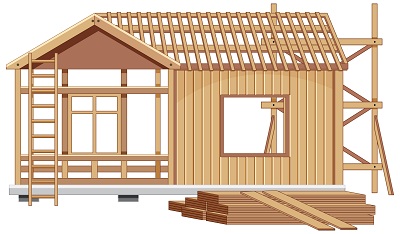Sheathing Calculator
Wall Dimensions:
Sheathing Panel Dimensions:
Results:
Calculating the correct amount of sheathing is essential to maintaining structural integrity and protecting against the elements. Whether you’re working on a residential home or a large commercial project, our sheathing calculator helps you accurately estimate the amount of material needed, saving both time and resources.
How the Sheathing Calculator Works?
Our calculator is straightforward: simply input the dimensions of your wall, roof, or floor, and it will calculate the required sheathing material. It works for various materials, like plywood and OSB (Oriented Strand Board), giving you flexibility based on your project needs.
Total Sheathing Area = Height × Width
Then, to determine the number of sheets needed, use:
Number of Sheets = Total Sheathing Area / Area Covered By One Sheet
| Sheathing Type | Area Covered (sq. ft.) | Thickness (inches) |
| OSB | 32 | ½ |
| Plywood | 48 | 3/4 |
Real-Life Applications
- Residential Roofing: When replacing or installing a new roof, it’s crucial to know how much plywood you’ll need to cover the entire area. The sheathing calculator gives precise estimates, preventing costly mistakes.
- Commercial Construction: For larger-scale projects like warehouses, contractors rely on OSB for wall sheathing due to its durability and cost-efficiency.
Example: A builder planning to cover a 500 sq. ft. wall with plywood can use the calculator to determine the number of sheets required, ensuring no material is wasted.
Tips for Effective Sheathing
- Add an extra 10% to your material estimate to account for cutting and fitting waste.
- Always choose the sheathing material based on your local climate, especially considering moisture resistance in wet environments.
- Before installation, verify that the walls or roof are level and straight. This will make installing the sheathing easier and ensure a better fit.
- Plan the layout of your sheathing to minimise the number of cuts, reducing both material waste and labour time.
Expert Advice: Ensure proper fastening by using recommended nails or screws, especially in high-wind regions. This adds long-term durability and improves overall structural safety.
With this tool, you can ensure your projects are strong, efficient, and ready to withstand the elements.





